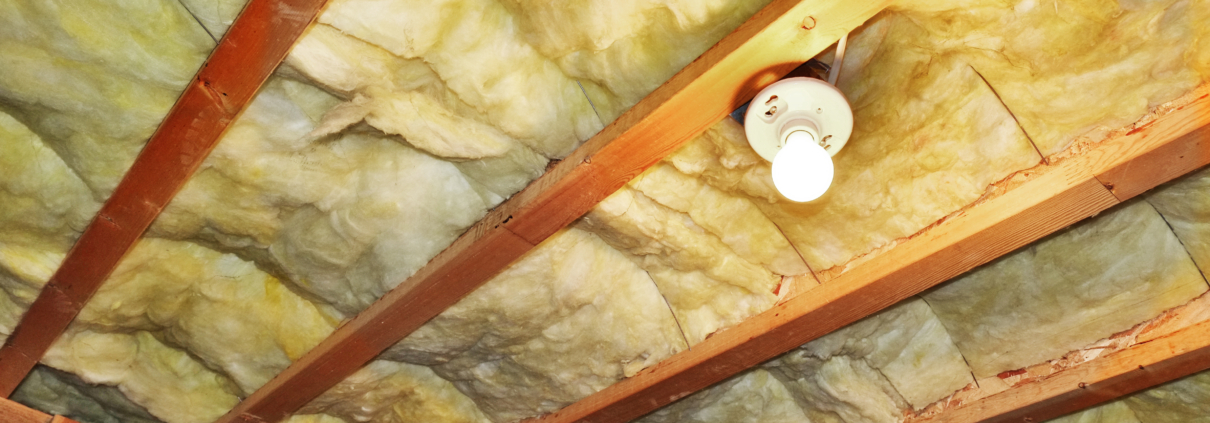Basement Insulation and Air Sealing
The Office of Energy Efficiency & Renewable Energy has discussed the scope of basement insulation and house sealing and mentions that these measures help boost a building’s thermal performance. In addition, the basement insulation and house sealing are essential to transform the basement into a usable and dryer space for the inhabitants and improving the performance of HVAC equipment.
Further, basement insulation and house sealing are helpful if you do not want to pay high energy bills every season. For example, with proper insulation and sealing, your house’s basement will retain cooler and warmer air in summer and winter, respectively. Thus, the demand on the HVAC setup will be reduced.
However, these two measures often addressed simultaneously for improving the energy efficiency and thermal comfort of a building are actually different. We will discuss how these processes differ, how many differences they make, and their benefits and costs.
Is Air Sealing the Same as Insulation?
Not quite. As the name suggests, air sealing is the process of sealing leaks in various areas of your house, including the basement. Air sealing becomes necessary when there is no control over the outside air entering your house and conditioned inside air escaping the building.
The common areas of a basement needing air sealing are rim joists, foundation walls, ceilings, floors, etc. A blower door test conducted by an expert air sealing and insulation contractor will tell you if the basement of your building needs air sealing.
How does Air Sealing Work?
The blower test helps in detecting the location of cracks and holes in your house. On finding the unwanted presence of crevices, cracks, or holes and assessing the house as drafty, the professional seals the air gaps. There are many sealing agents available, and based on the size and location of air gaps, the sealing agent is selected.
The professional selects the sealant suitable for air sealing in the basement. The application process of the sealing agents differs based on the property of the sealing agent used. With air sealing in required places in the basement, the air from outside cannot enter. This aspect comes in handy, especially in the cold or rainy season.
Also, the sealing prevents the to and fro movement of air during summer, making the job of cooling the house with fans and AC easier.
How does Insulation Work?
The professional hired assesses the condition of the space that requires insulation. Based on the location and insulating agent selected, the professional plans the procedure of adding insulation.
Before understanding how insulation works, it’s wise to explore the movement of warm air or heat inside the house. Heat travels from warmer areas to cooler ones. So, as you switch on the heater during winter, the heat goes from the warmer part of the house to the colder sides.
But, as the summer comes, you use the cooler or air-conditioner to keep your house cooler compared to the outside. Then, the exterior heat aims to invade your comparatively cooler house. And that’s when insulation comes into play. The insulation prevents or slows the entry of unwanted heat by providing an envelope or protective barrier.
Furthermore, as the job of keeping your house cooler becomes easy, you can use the AC less. And during the winter, the heat inside the house will take longer to leave the house, thus helping you keep a somewhat higher temperature in the interiors.
Cost of Basement Insulation
Considering the insulation types available for the basement, the cost of insulation materials can reach anywhere between $0.2 and $3 per board foot. Getting foam insulation can require you to spend anywhere between $0.2 and $15 per square foot.
The overall bill for basement insulation can reach somewhere between $1000 and $6500. The price variation occurs due to the variation in installation costs of professionals hired for basement insulation, regional cost difference, and the type and amount of insulation you need.
Types of Insulation in the Basement
The variety of insulation in the basement comes from the location of insulation and types of insulation used. You can insulate the walls, floors, and ceiling of the basement, and that is how we have three types of basement insulation based on location.
But, mainly, the basement insulation rises from the varieties of ingredients used in insulation. Sprayed foam insulation involves the use of a sprayer for insulating the ceilings and walls in the basement. The insulation takes a hard form after its application. Thus, this variety serves well for closing gaps in the basement walls or ceilings and, therefore, acts as giving good barrier for protecting you from unpleasant weather.
Foam boards, another type of basement insulation that can be used on floors, ceilings, and walls in the basement, involve a rigid type of insulation. This aims to cut down the heat flow into and out of the basement through structures or crevices. This type involves integrating insulation materials that are easy to handle and vary in thickness, thus giving you both ease and convenience.
Apart from these types, we have commonly used insulation using fiberglass. In this type, fiberglass combines with other components to give excellent insulation when applied to basement ceilings and walls. The resulting insulation product can be found in the form of rolls and sheets.
Types of Air Sealing Products
There are wide varieties of air sealing products based on the size of gaps and types of structures that need sealing. You can use caulks to close the small gaps like openings or cracks in non-movable parts like window frames and door frames. But you can get a wide variety of caulks owing to their different properties and qualities.
For sealing comparatively wider openings, you can make use of foams. These polyurethane-based sealants vary in properties. Foams can attach well to approximately every surrounding object and expand to cover surfaces with rough textures and irregular cracks. Among foams, there are subtypes based on application suitability for different sizes of openings.
You may consider affordable one-part foams for filling cracks. For sealing large openings and surfaces, you can use two-part foams. However, you’ll need specific sealing materials for closing the gaps in movable objects like windows and doors. And for that purpose, we have got weatherstripping materials. But, weatherstripping may not be as suitable as rigid materials for air sealing larger surfaces and penetrations in the basement. Rigid materials include plywood, polyethylene, drywall, and plastic-based housewraps.
Is Air Sealing More Important than Insulation?
Both air sealing and insulation in parts of the house, including the basement, provide protective layers to keep the insides of your house comfortable. But the two processes differ in the aspects they focus on and how they operate.
Insulation aims to control the house temperature and thus prevents or lowers the heat transfer between your house interiors and exteriors. On the other hand, air sealing covers any gaps or holes in your residence, minimizing air passing from inside to the outside and vice versa.
Both processes are valuable for keeping your house temperature apt for living. But what if you have a tight budget and want to choose one of the two? In other words, which one should receive more priority from you as a homeowner among air sealing and insulation in the basement?
Many experts consider both sealing and insulation important, and when working together, these procedures are great for improving your living conditions. But there’s no point in getting good insulation in the basement if it’s filled with small gaps promoting unwanted air movements.
Unattended problems associated with air tightness always bring down the efficacy of the insulation. Moreover, air sealing is thought to be more effective alone compared to insulation. Despite both processes being involved with energy efficiency, air sealing scores higher on the scale of making your house comfy and increasing the effectiveness of the house air-conditioning system.
How Much of a Difference Does Air Sealing Make?
The presence of air leaks contributes to 20% of 40% of energy loss in your residence. And that can be prevented by having good sealing in your house locations, including the basement. Even proper air control aided by air sealing extends to controlling vapor passage.
Along with unwanted air entry, excess water vapor or moisture can enter your house through cracks or gaps. But with air sealing, you can control the passage of excess moisture entry that causes structural damage in your interiors.
Further, you can save approximately 10% on costs for heating and cooling the inside of your house.
Benefits of Air Sealing and Insulation in the Basement
There are several benefits of installing or applying sealing and insulation in your basement.
- Preventing the entry of pollens, or substances carrying the potential to cause allergy
- Better temperature control during cold weather, and thus becoming effective, especially in cold regions
- Improved regulation of interior humidity
- Cutting out noise from the exteriors of the house
- Preventing freezing of water pipes in colder regions or during winters
Final Thoughts
We hope you have gained a sound idea of how air sealing and insulation in the basement differ. Both processes make the interiors of your house more suitable for living. But, if faced with the need to pick any single procedure, you can go for air sealing since it is more energy efficient.




